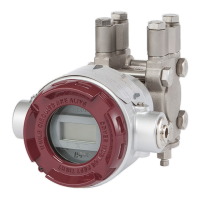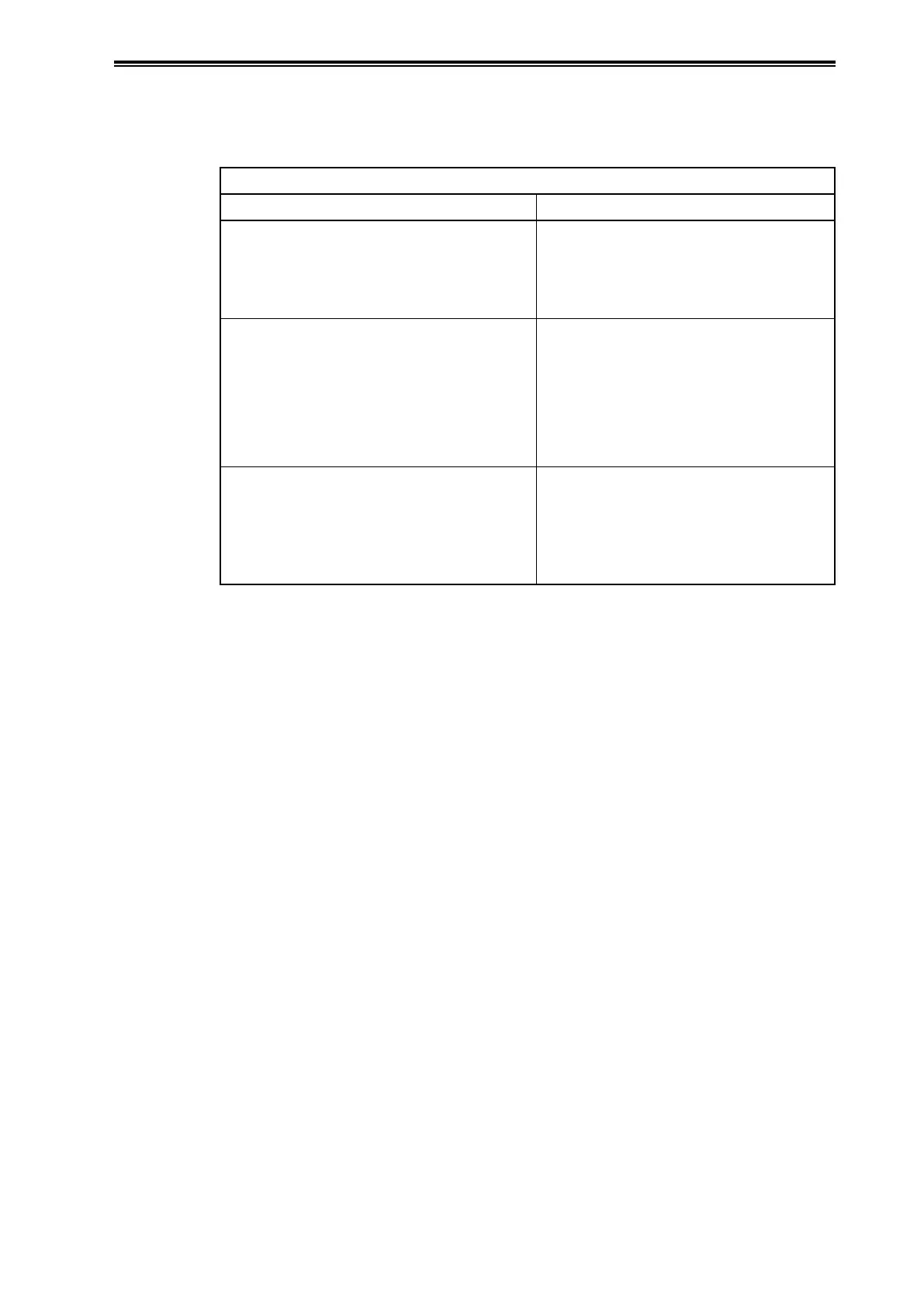A-23
Appendix A Maintenance and Troubleshooting of this Device
In this case, the index value under normal operating conditions is similar to that with clogging,
or the index value is almost the same even when clogging occurs. In either case, it is necessary to
examine the cause and to minimize this effect. Use the following guidelines for adjustment.
Guidelines for parameter adjustment
Phenomenon Adjustment
Since the process variable fluctuates and there is
always low-frequency pressure fluctuation, the
value of the index is small even under normal
operating conditions. The standard deviation is
relatively large.
Decrease the Press Freq Filter Constant in
steps of 0.02–0.05.
The PV does not change and the standard
deviation is also small. The frequency of the
original pressure fluctuation is low and the index
value is small. (The reference index value is 0.1
or less under normal operating conditions.) Fluid
viscosity is high.
Change the Press Freq Index Sensor Selection.
If the present value is “DP, 120 ms”, set it to
“DP, 240 ms,” and if the present value is “DP,
240 ms,” set it to “DP, 360 ms.”
Note:
This adjustment can be performed only
when DP is selected for the Press Freq
Index Sensor Selection.
The magnitude and frequency of the original
pressure fluctuation are acceptable. (The
reference index value is 0.2 or more under
normal operating conditions.) However, the
value is almost the same when there is clogging.
Decrease the Press Freq Filter Constant in
steps of 0.02–0.05.
A3-4-7 Parameter adjustment (for single side clog diagnosis)
If both-side clogging can be diagnosed but not one-side clogging, changing the Press Freq Index
Sensor Selection to “SP, 360 ms” may make diagnosis possible. However, this change lowers the
performance of both-side clogging diagnosis. Furthermore, changing the parameter does not
necessarily ensure the reliable diagnosis of one-side clogging. Be sure you understand these points
before changing the parameter.
After the parameter has been changed, return to section A3-4-1, and obtain the index value under
normal operating conditions again. Since the data collected so far cannot be used, follow sections
A3-4-1 to 4 again to collect the data. If both-side clogging cannot be diagnosed after the parameter
has been changed, and the possibility of diagnosing one-side clogging has not changed, change the
setting back to its previous value. Then set the diagnosis alarm for the case where only both-side
clogging is diagnosed, referring to section A3-4-5.

